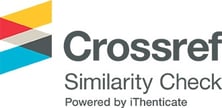Penggunaan Informasi Pengungkapan Sukarela di Media Sosial: Analisis Technology Acceptance Model (TAM)
DOI:
10.33395/owner.v7i4.1947Keywords:
Perceived Enjoyment, Technology Acceptance Model (TAM), Voluntary DisclosureAbstract
This study aims to analyze the determinants of investor behavior while making investment decisions using voluntary disclosure information obtained from social media pages. Using the technology acceptance model, the correlation between belief constructs and behavioral intentions is measured. Perceived ease of use, perceived usefulness, and perceived enjoyment are the three belief constructs used in this study. 180 employees were respondents, and structural equation modelling partial least square was used to evaluate the hypotheses. The results showed that Indonesian investors believe that information regarding voluntary disclosures provided on social media pages will influence their decision to use such information when making investments. The intention is influenced by perceived ease of use, perceived usefulness, and perceived enjoyment. This study also found that perceived enjoyment has an effect on perceived ease of use and perceived usefulness.
Downloads
Plum-X Analityc
References
Adams, D. A., Nelson, R., Todd, P. A., Nelson, U. S. A. R. R., Peter, U. S. A., & Todd, A. (1992). Perceived Usefulness, Ease of Use, and Usage of Information Technology: A Replication. In Quarterly (Vol. 16, Issue 2).
Ajzen, I. (1991). The theory of planned behavior. Organizational Behavior and Human Decision Processes. https://doi.org/10.1016/0749-5978(91)90020-T
Blankespoor, E., Miller, G. S., & White, H. D. (2014). The role of dissemination in market liquidity: Evidence from firms’ use of TwitterTM. Accounting Review, 89(1), 79–112. https://doi.org/10.2308/accr-50576
Botosan, C. A. (1997). Disclosure Level and the Cost of Equity Capital. In Source: The Accounting Review (Vol. 72, Issue 3).
Bushman, R. M. & S. A. J. (2003). Transparency, Financial Accounting Information, and Corporate Governance.
Cimperman, M., Makovec Bren?i?, M., & Trkman, P. (2016). Analyzing older users’ home telehealth services acceptance behavior-applying an Extended UTAUT model. International Journal of Medical Informatics. https://doi.org/10.1016/j.ijmedinf.2016.03.002
Davis, F. D. (1989). Perceived usefulness, perceived ease of use, and user acceptance of information technology. MIS Quarterly: Management Information Systems. https://doi.org/10.2307/249008
Davis, F. D., Bagozzi, R. P., & Warshaw, P. R. (1989). User Acceptance of Computer Technology: A Comparison of Two Theoretical Models. Management Science. https://doi.org/10.1287/mnsc.35.8.982
Davis, F. D., Bagozzi, R. P., & Warshaw, P. R. (1992). Extrinsic and Intrinsic Motivation to Use Computers in the Workplace. Journal of Applied Social Psychology. https://doi.org/10.1111/j.1559-1816.1992.tb00945.x
Hair, J. F., Sarstedt, M., Hopkins, L., & Kuppelwieser, V. G. (2014). Partial least squares structural equation modeling (PLS-SEM): An emerging tool in business research. In European Business Review. https://doi.org/10.1108/EBR-10-2013-0128
Hardiningsih, P., Fakultas, D., Universitas, E., & Semarang, S. (2008). ANALISIS FAKTOR-FAKTOR YANG MEMPENGARUHI VOLUNTARY DISCLOSURE LAPORAN TAHUNAN PERUSAHAAN. Jurnal Bisnis Dan Ekonomi (JBE), 15(1), 67–79.
Islam, A. K. M. N. (2012). The Role of Perceived System Quality as Educators’ Motivation to Continue E-learning System Use. AIS Transactions on Human-Computer Interaction. https://doi.org/10.17705/1thci.00037
Kock, N. (2018). WarpPLS User Manual?: Version 6 . 0. ScriptWarp Systems.
Lee, M. C. (2010). Explaining and predicting users’ continuance intention toward e-learning: An extension of the expectation-confirmation model. Computers and Education. https://doi.org/10.1016/j.compedu.2009.09.002
Legris, P., Ingham, J., & Collerette, P. (2003). Why do people use information technology? A critical review of the technology acceptance model. Information and Management. https://doi.org/10.1016/S0378-7206(01)00143-4
Meek, G. K., Roberts, C. B., & Gray, S. J. (1995). FACTORS INFLUENCING VOLUNTARY ANNUAL REPORT DISCLOSURES BY U.S., U.K. AND CONTINENTAL EUROPEAN MULTINATIONAL CORPORATIONS. www.jstor.org
Miko?ajewicz-Wo?niak, A., & Scheibe, A. (2017). Social media in company’s communication with investors. In HANDEL WEWN?TRZNY (Vol. 2, Issue 367).
Moon, J.-W., & Kim, Y.-G. (2001). Extending the TAM for a World-Wide-Web context. http://www.cc.gatech.edu/gvu/user_surveys/papers/
Robey, D. (1979). User Attitudes and Management Information System Use. In Source: The Academy of Management Journal (Vol. 22, Issue 3). https://www.jstor.org/stable/255742
Trinkle, B. S., Crossler, R. E., Addy, N., Basoglu, A., Carver, B., Henderson, C., Highfield, M., Kobelsky, K., Roskelly, K., Scheiner, J., & Steinbart, P. (2015). Voluntary Disclosures via Social Media and the Role of Comments.
Venkatesh, V. (2000). Determinants of Perceived Ease of Use: Integrating Control, Intrinsic Motivation, and Emotion into the Technology Acceptance Model. Information Systems Research. https://doi.org/10.1287/isre.11.4.342.11872
Venkatesh, V., & Davis, F. D. (2000). Theoretical extension of the Technology Acceptance Model: Four longitudinal field studies. Management Science. https://doi.org/10.1287/mnsc.46.2.186.11926
Venkatesh, V., Speier, C., & Moms, M. G. (2002). zyxwvutsr User Acceptance Enablers in Individual Decision Making About Technology: Toward an Integrated Model zyx (Vol. 33).
Venkatesh, V., Thong, J. Y. L., Chan, F. K. Y., Hu, P. J. H., & Brown, S. A. (2011). Extending the two-stage information systems continuance model: Incorporating UTAUT predictors and the role of context. Information Systems Journal. https://doi.org/10.1111/j.1365-2575.2011.00373.x
Venkatesh, V., Thong, J. Y. L., & Xu, X. (2012). Consumer acceptance and use of information technology: Extending the unified theory of acceptance and use of technology. MIS Quarterly: Management Information Systems. https://doi.org/10.2307/41410412
Wibisono, G., & Putri, D. D. A. (2018). Analyzing Factors Affecting the Use of Voluntary Disclosure Information using a Modified Theory of Reasoned Action: A Study in Indonesia. The Indonesian Journal of Accounting Research, 21(2). https://doi.org/10.33312/ijar.342
Yi, M. Y., & Hwang, Y. (2003). Predicting the use of web-based information systems: Self-efficacy, enjoyment, learning goal orientation, and the technology acceptance model. International Journal of Human Computer Studies, 59(4), 431–449. https://doi.org/10.1016/S1071-5819(03)00114-9
Zhang, J. (2015). Voluntary information disclosure on social media. Decision Support Systems, 73, 28–36. https://doi.org/10.1016/j.dss.2015.02.018
Zhou, M. J., Lei, L. G., Wang, J., Fan, W. P., & Wang, A. G. (2015). Social media adoption and corporate disclosure. Journal of Information Systems, 29(2), 23–50. https://doi.org/10.2308/isys-50961
Downloads
Published
How to Cite
Issue
Section
License
Copyright (c) 2023 Soemarno Hidayatullah S, Nurul Afiqah Annas, Wenni Andriani

This work is licensed under a Creative Commons Attribution-NonCommercial 4.0 International License.

















